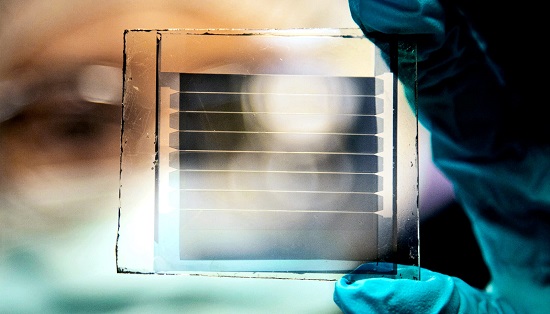 Friday, May 3, 2024
Friday, May 3, 2024  Friday, May 3, 2024
Friday, May 3, 2024 
A new transparency-friendly solar cell design could marry high efficiencies with 30-year estimated lifetimes, researchers report.
It may pave the way for windows that also provide solar power.
“Solar energy is about the cheapest form of energy that mankind has ever produced since the industrial revolution,” says Stephen Forrest, a professor of electrical engineering at the University of Michigan, who led the research. “With these devices used on windows, your building becomes a power plant.”
While silicon remains king for solar panel efficiency, it isn’t transparent. For window-friendly solar panels, researchers have been exploring organic—or carbon-based—materials. The challenge for Forrest’s team was how to prevent very efficient organic light-converting materials from degrading quickly during use.
The strength and the weakness of these materials lie in the molecules that transfer the photogenerated electrons to the electrodes, the entrance points to the circuit that either uses or stores the solar power. These materials are known generally as “non-fullerene acceptors” to set them apart from the more robust but less efficient “fullerene acceptors” made of nanoscale carbon mesh. Solar cells made with non-fullerene acceptors that incorporate sulfur can achieve silicon-rivaling efficiencies of 18%, but they do not last as long.
The researchers set out to change that. In their experiments, they showed that without protecting the sunlight-converting material, the efficiency fell to less than 40% of its initial value within 12 weeks under the equivalent of 1 sun’s illumination.
“Non-fullerene acceptors cause very high efficiency, but contain weak bonds that easily dissociate under high energy photons, especially the UV [ultraviolet] photons common in sunlight,” says Yongxi Li, assistant research scientist in electrical engineering and computer science and first author of the paper.